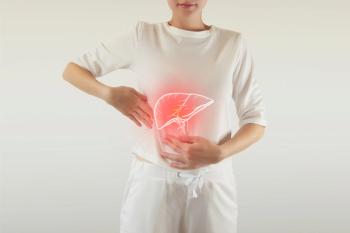
- Vol 36 No 3
- Volume 36
- Issue 3
Teenager with ankle pain and swelling
A 15-year-old adolescent Caucasian male with no significant past medical history presented to the clinic with gradually worsening left ankle pain over the past 2 weeks, ever since he started his football practice. He complained of dull aching pain at the lower end of his left leg for the past 4 months, which was slightly relieved by over-the-counter nonsteroidal anti-inflammatory drugs (NSAIDs). He twisted his left ankle and noticed further worsening pain, which prompted this doctor visit.
The case
A 15-year-old adolescent Caucasian male with no significant past medical history presented to the clinic with gradually worsening left ankle pain over the past 2 weeks, ever since he started his football practice. He complained of dull aching pain at the lower end of his left leg for the past 4 months, which was slightly relieved by over-the-counter nonsteroidal anti-inflammatory drugs (NSAIDs). He twisted his left ankle and noticed further worsening pain, which prompted this doctor visit.
Physical exam and testing
On examination, the patient’s left ankle was swollen and tenderness was elicited at the lower end of the tibia, just above the medial and lateral malleolus. Ankle inversion and eversion movements were painful and the range of motion was limited. No crepitus was noted.
An x-ray (Figure 1) showed a multilocular lucent lesion within the distal anterior metaphysis of the left tibia, measuring 5.9 cm by 3.7 cm by 4.8 cm with well-circumscribed margins expanding the anterior cortex. There appeared to be a periostitis/periosteal reaction medially (Figure 2), which may indicate a pathologic fracture. Magnetic resonance imaging (MRI) confirmed the diagnosis. The MRI of the left tibia and ankle bones (Figure 3) showed a 6.6-cm aneurysmal bone cyst of the distal left tibial metaphysis. There were extensive marrow edema and enhancement noted, which might be due to an undisplaced pathologic fracture. A fluid-fluid level had been demonstrated.
Differential diagnosis
The differential diagnosis for bone pain and swelling (Table) consists of:
SIMPLE BONY CYST
Simple bony cyst (solitary bone cyst/unicameral bone cyst [UBC]) is a common benign tumor of childhood and adolescence. These cysts usually occur in the metaphyseal region of the long bones such as the humerus and femur. They also can be seen in the calcaneum, fibula, ulna, pelvis, and lumbar spine areas. Proposed theories in the pathogenesis include entrapment of small nests of synovial cells in an intraosseous position, which indicates intramedullary hemorrhages. Blockage of venous drainage, localized failure of ossification in the metaphyseal area during periods of rapid growth (childhood/adolescence), and blockage of the intramedullary circulation are the other popular theories on the pathogenesis of UBC.
Most of these cysts are diagnosed incidentally on x-rays, and some can present with pain, local warmth, pathological fracture, and localized tenderness. They are classified as active when they are located within 1 cm of the physis and as inactive if they encroach toward diaphysis.1 An x-ray shows a symmetrically expansile, radiolucent lesion with a thin cortical rim. Sometimes portions of fractured bone will be seen as thin fragments at the bottom of cyst, known as “fallen fragment/fallen leaf sign.” Similarly, a gas bubble seen at the top of the cyst is known as the “rising bubble sign." Treatment and follow-up plan will depend on the symptoms, location, the presence of fracture, and age at presentation. If UBCs are found incidentally, away from physis without any risk of pathological fractures, nonoperative management with close follow-up is indicated.
Traditionally, curettage and bone grafting have been the definitive procedures for UBC. Surgical decompression can be achieved by needles, curettage, cannulated screws, K–wires, and intramedullary nails. Dormans and colleagues used percutaneous intramedullary decompression, curettage, and bone grafting with calcium sulfate pellets, which showed a good success rate.2
OSTEOBLASTOMA
Osteoblastoma is a rare benign bone tumor accounting for 1% of all bone neoplasms and 3% of all benign primary bone tumors. It may occur at any part of the skeleton with a predilection for the spine and sacrum. Osteoblastoma is difficult to distinguish from osteoid osteoma. Osteoblastomas are usually larger than 2 cm in size. They present between ages 10 to 20 years with pain, stiffness, soft tissue mass, chronic back pain, fracture, and neurological dysfunction. Osteoblastoma lesions are seen as radiolucent lesions on x-ray. They may reach a size of 2 cm to 10 cm in maximum diameter, and they may attenuate the cortex and expand the bone mimicking an aneurysmal bone cyst (ABC). Some osteoblastoma lesions may show reactive osteosclerosis and bone destruction mimicking malignant bone tumors. Computed tomography (CT) scans show marginal sclerosis, exact anatomical details, expansion, and intramatrix mineralization.3 Treatment of stage 1 (latent) or stage 2 (active) is curettage indicated with or without local adjuvants (phenol) and for stage 3 (aggressive) tumors, a marginal/wide resection. Recently, image-guided radiofrequency thermal ablation has been used for small osteoblastoma (<2 cm in maximum diameter).
GIANT CELL TUMOR OF BONE
Giant cell tumor of bone (GCTB) usually occurs after skeletal maturity with a peak incidence in ages 20 to 30 years, with a slight female predominance. It rarely occurs in persons aged younger than 15 years. Despite its benign nature, 1% to 4% of GCTB metastasize to the lungs.4 Long-term follow-up is important as malignant transformation may occur. Most commonly affected sites are the epiphysis of the long bones, distal femur, and proximal tibia, and less commonly vertebral bodies, pelvis, and sacrum. It usually presents with pain, swelling, and limitations of joint involvement. On plain radiographs, GCTB typically appears as an expansile, eccentrically placed lytic area involving the epiphysis and the adjacent metaphysis. The CT scans provide a more accurate assessment of cortical thinning and penetration, and presence or absence of bone mineralization. Characteristic MRI findings are an expansile hypervascular mass with cystic changes, heterogeneous low-to-intermediate signal intensity on T1-weighted images, and intermediate-to-high intensity on T2-weighted images.5 Chest CT is indicated to evaluate for the presence of pulmonary metastasis. Local appendicular GCTBs are better treated with intralesional curettage followed by polymethylmethacrylate bone cement filling to minimize the recurrence. Denosumab is a fully human monoclonal antibody against receptor activator of nuclear factor kappa B ligand [RANKL] that acts as neoadjuvant therapy in the management.
OSTEOSARCOMA
Osteosarcoma (OS) is a primary malignant bone tumor and accounts for 0.2% of malignant tumors. It usually affects males aged 8 to 25 years. It exhibits a high degree of malignancy and tends to metastasize early. Lung metastasis is frequently observed in newly diagnosed patients and pulmonary symptoms may develop within 1 year without chemotherapy. Risk factors for osteosarcoma are prior radiation therapy for solid cancers, Paget disease, retinoblastoma, Li-Fraumeni syndrome, and Rothmund–Thompson syndrome. The majority of patients present with localized pain, soft tissue mass, and tender swelling.6 The x-ray findings include destructions of the normal trabecular pattern, indistinct margins, destruction of the cortex, periosteal bone formation, and the formation of Codman triangle. The associated soft tissue mass is variably ossified in a radial/sunburst pattern. An MRI is useful for local staging of the bone, soft tissue extension, and joint/marrow involvement. A CT scan is best suited for metastatic disease diagnosis in the thorax. Amputation was the primary modality of therapy of osteosarcoma before the advent of chemotherapy and limb salvage surgeries. Currently, limb salvage surgery, pre- and postchemotherapy, and radiotherapy are the standard of management for osteosarcoma in children with or without any metastasis. The main line of chemotherapeutic agents is Adriamycin, cisplatin, methotrexate, cyclophosphamide, and epirubicin. With the development of neoadjuvant chemotherapy, limb salvage surgery, and lung metastasis dissection, the 5-year survival rate increased to 60% to 70%.7
CHONDROBLASTOMA
Chondroblastoma is a rare benign cartilaginous tumor composed of immature chondroblasts with a scant chondroid matrix. It represents 1% of all primary bone tumors, located at epiphysis and apophysis. Chondroblastomas are mostly located at the epiphysis of the proximal and distal parts of the femur, proximal part of the humerus, and proximal tibia. They usually occur between ages 15 to 20 years, with male predominance. Clinical symptoms include pain, local tenderness, swelling, and limited motion of the adjacent joint. The classic radiographic appearance of chondroblastoma is a well-defined, eccentric oval/round lytic lesion involving the epiphysis adjacent to an open growth plate. The x-ray may show some expansion of the bone and a sclerotic margin. Dystrophic calcification is occasionally present and may surround individual cells, giving the classic “chicken wire” appearance.8 These lesions show central tumoral enhancement after intravenous (IV) gadolinium contrast on MRI images and Brodie abscess shows peripheral enhancement.9 The gold standard for the treatment of chondroblastoma remains complete and meticulous curettage of the lesion most frequently combined with bone grafting. Various studies of chondroblastoma in adults and children have demonstrated recurrence rates ranging between 8.3% to 15%.
ANEURYSMAL BONE CYSTS
Aneurysmal bone cysts (ABC) are benign, nonneoplastic, expansile, vascular, and locally destructive lesions. The lesion may arise de novo (65%) or secondarily (35%) in preexisting lesions such as giant cell tumor, osteoblastoma, chondroblastoma, and angioma. Almost 80% of the lesions present in skeletally immature patients aged younger than 20 years.10 Despite being reported in almost every bone of the body, ABC is more often encountered in the metaphysis of the long bones, distal femur, tibia, and vertebrae. Approximately 60% of the lesions originate from metaphysis and 28% of them originate from metaphysis and subchondral parts.11
Clinical presentation
The clinical presentation of ABC varies widely. Most often these patients present with long-standing, dull aching pain following a trauma, which usually worsens with time. Some patients present with severe pain, adjacent bone swelling, discomfort with walking, and often pathological fractures such as in this patient. A calcaneal ABC presents with pain, discomfort with walking, and swelling as well. Having nonspecific clinical findings creates a high suspicion for ABC and the diagnosis is made radiologically.
Diagnosis
Most commonly used diagnostic modalities for ABC are x-rays, CT scan, and MRI, and very rarely, biopsy with histological examination. These ABC appear on radiographs as radiolucent lesions of eccentric origin in the metaphysis of long bones.12 The term “soap bubble” is used to describe the lesions with an erosion of the cortex of the bone and elevation of the periosteum. A CT scan will be useful to demonstrate anatomical integrity and to demonstrate cortical erosions as well. An MRI allows identification of the thin septa dividing the cyst13 as well as demonstrating fluid-fluid levels within the cyst. The MRI images of ABC on T1 and T2 typically show a nonhomogeneous cystic lesion and multiple fluid-fluid levels surrounded by a rim with low signal strength. The fluid-fluid levels are better evaluated on a T2-weighted MRI.
Management
Traditionally, these tumors are treated with an open surgery with either an intralesional surgical approach or en bloc excisions. Furthermore, a variety of chemical/physical adjuvants have been utilized in order to reduce the risk of local recurrence after excision. Currently, there is a shift to more minimally invasive procedures in order to avoid the complications of open surgical excision. Good results have been reported during percutaneous surgery or with the use of embolization. Recently, sclerotherapy has emerged as a promising treatment. Lastly, noninvasive treatment options, such as pharmacologic treatment with denosumab or bisphosphonates have been reported to be effective in the management of the disease.
Complete excision of the ABC is accompanied by an excellent local remission rate that approaches 100%. However, this technique is undoubtedly cumbersome and accompanied by an increased risk for complications such as bleeding, pain, growth disturbances, and more. Furthermore, there is a frequent need for local reconstruction of the resulting skeletal defect.
Alternatively, intralesional curettage is a less invasive method. It has an acceptable rate of local control-90% in large series. Various adjuvant agents such as phenol, bone cement, cryotherapy with liquid nitrogen, or a high-speed burr are used to reduce the recurrence rate.
Embolization has been used as the treatment option for ABC especially in locations where surgical management is difficult and associated with substantial risk of complications. It also has been used for ABC of the axial skeleton. Embolization is also used as a surrogate method to open surgery, in order to minimize the bleeding during excision and to reduce the risk for local recurrence.
Modern sclerotherapy treatment for ABC with a polidocanol is a safer treatment that generally lacks serious adverse effects. Rastogi and colleagues reported a cure rate of approximately 97%.14
Patient course
The patient in this case was treated with curettage, biopsy, and allograft packing. Further on, he was advised to use a Cam walking boot for up to 8 weeks. Additionally, he will be followed for 2 years with interval follow-up x-rays every 6 months to exclude any recurrence.
Conclusion
Most of the benign cystic bone lesions and malignant lesions usually present with chronic bone pain, swelling of joints, limp, and gait issues. A detailed history, proper imaging studies including x-ray, CT, and/or MRI help to diagnose these lesions, and bone biopsy is rarely needed. Characteristic features of the imaging will help the physician to narrow down the differential diagnosis and guide with the appropriate management.
Take-home points
Roughly 85% of all acute ankle injuries are sprains, out of which about 85% are uncomplicated; ie, involving the lateral ligaments only. Most of these ankle sprains can be diagnosed clinically and managed traditionally on an outpatient basis without needing many workups. The combination of protection, relative rest, ice, compression, elevation, and support (PRICES) still holds good for conservative management of simple ankle sprains. The use of radiographs in patients with ankle injuries is guided by the Ottawa Ankle Rules.
These rules state that an ankle radiographic series is required only if the patient has pain in the malleolar zone and any of the following 3 findings15:
1. Bone tenderness at the posterior edge or tip of the lateral malleolus (ie, the lower 6 cm of the fibula).
2. Bone tenderness at the posterior edge or tip of the medial malleolus (ie, the lower 6 cm of the tibia).
3. Inability to bear weight immediately after the injury and in the emergency department.
The results of the test should be used to make the diagnosis and formulate further management.
References:
1. Noordin S. Allana S, Umer M, Jamil M, Hilial K, Uddin N. Unicameral bone cyst: current concepts, Ann Med Surg (Lond). 2018;34:43-49.
2. Dormans JP, Sankar WN, Moroz L. Erol B. Percutaneous intramedullary decompression, curettage, and grafting with medical-grade calcium sulfate pellets for unicameral bone cysts in children: a new minimally invasive technique. J Pediatr Orthop. 2005;25(6):804-811.
3. Pavanello M, Melloni I, Fiaschi P, et al. A rare case of osteoblastoma associated to aneurysmal bone cyst of the spine. Case report, Br J Neurosurg, 2016; 30(1):106-109.
4. Murphey MD, Nomikos GC, Flemming DJ, Gannon FH, Temple HT, Kransdorf MJ. From the archives of AFIP: Imaging of giant cell tumor and giant cell reparative granuloma of bone: radiologic-pathologic correlation. Radiographics. 2001;21(5):1283-1309.
5. Kwon JW, Chung HW, Cho EY, et al. MRI findings of giant cell tumors of the spine, AJR Am J Roentgenol. 2007;189( 1):246-250.
6. Babazadeh S, Broadhead ML, Schlicht SM, Powell GJ, Tymms GM. Pathologic fracture of a calcaneal aneurysmal bone cyst. J Foot Ankle Surg. 2011;50(6):727-732.
7. Zhang Y, Yang J, Zhao N, et al. Progress in the chemotherapeutic treatment of osteosarcoma. Oncol Lett. 2018;16(5):6228-6237.
8. Angelini A, Arguedas F, Varela A, Ruggieri P. Chondroblastoma of the foot: 40 cases from a single institution. J Foot Ankle Surg. 2018;57(6):1105-1109.
9. Aboulafia AJ, Kennon RE, Jelinek J. Benign bone tumors of childhood. J Am Acad Orthop Surg. 1999;7(6):377-388.
10. Kuna S, Gudena R. “Soap bubble” in the calcaneus. CMAJ. 2011;183(10):1171.
11. Kransdorf MJ, Sweet DE, Aneurysmal bone cyst: concept, controversy, clinical presentation, and imaging. AJR Am J. Roentgenol. 1995;164(3):573-580.
12. Hecht AC, Gebhardt MC. Diagnosis and treatment of unicameral and aneurysmal bone cysts in the children. Curr Opin Pediatr. 1998;10(1):87-94.
13. Rapp TB, Ward JP, Alaia MJ. Aneurysmal bone cyst. J Am Acad Orthop Surg. 2012:20(4):233-241.
14. Rastogi S, Varshney MK, Trikha V, Khan SA, Choudhury B, Safava R. Treatment of aneurysmal bone cysts with percutaneous sclerotherapy using polidocanol. A review of 72 cases with long-term follow-up. J Bone Joint Surg Br. 2006;88(9):1212-1216.
15. Heyworth J. Ottawa ankle rules for the injured ankle. BMJ. 2003;326(7386):405-406.
Articles in this issue
over 6 years ago
What to do if you get sued for malpracticeover 6 years ago
How to diagnose and treat severe asthmaover 6 years ago
Feel more comfortable about recommending HPV vaccineover 6 years ago
Painful, tense acral bullae in a 12-year-old girlover 6 years ago
Supplements for sadness: Safe or senseless?over 6 years ago
Congenital upper limb deficiency: A case reportover 6 years ago
7 ways to involve parents in careover 6 years ago
Fish oil supplements not a fix for obese patients with asthmaover 6 years ago
Child physical abuse is linked to Friday report card releaseNewsletter
Access practical, evidence-based guidance to support better care for our youngest patients. Join our email list for the latest clinical updates.














